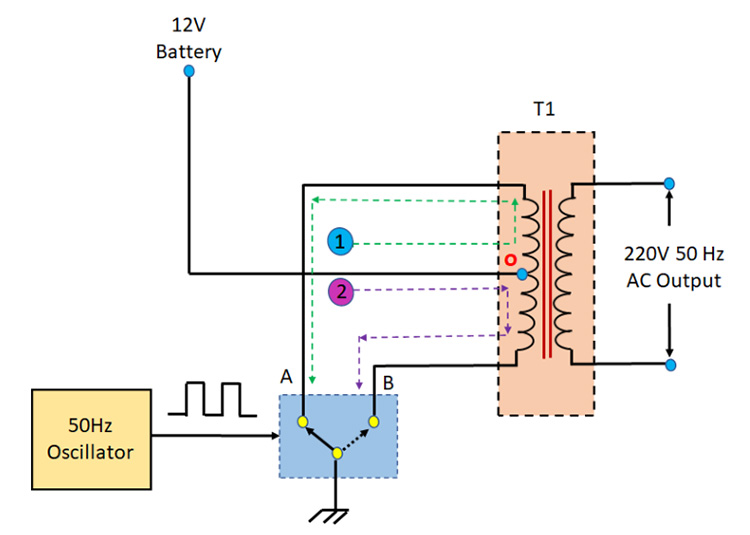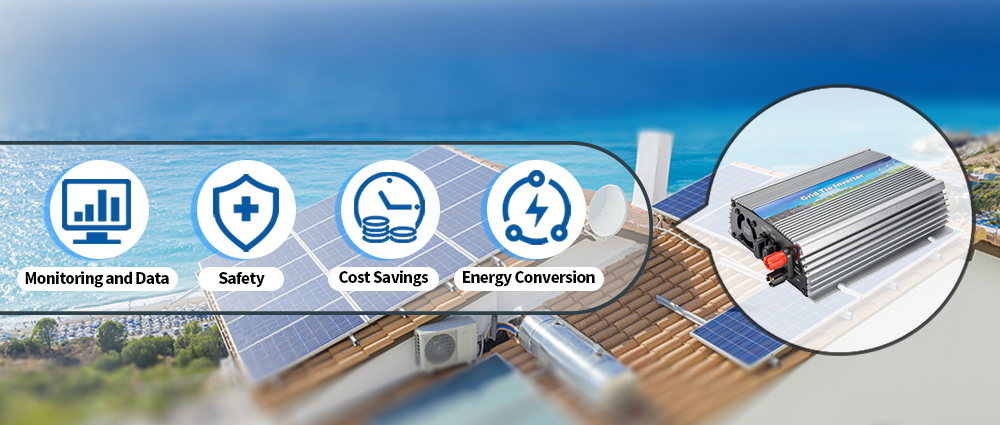Solar Inverter: Working and Advantages
We see many people using solar inverters these days which proves that its necessity has been increased in the current years. A solar inverter is similar to a normal electric inverter but sues the energy of the sun i.e. solar energy. A solar inverter helps in converting the direct current into alternate current with the help of solar power. Direct power is that power which runs in one direction inside the circuit and helps in supplying current when there is no electricity. Direct currents are used for small appliance like mobile phones, MP3 players, IPod etc. where there is power stored in the form of battery. In case of alternative current it is the power that runs back and forth inside the circuit. The alternate power is generally used for house hold appliances. A solar inverter helps devices that run on DC power to run in AC power so that the user makes use of the AC power. If you are thinking why to use solar inverter instead of the normal electric one then it is because the solar one makes use of the solar energy which is available in abundant from the sun and is clean and pollution free.
Solar inverters are also called as photovoltaic solar inverters. These devices can help you save lot of money. The small scale solar electric grid one have just two components i.e. the panels and inverter while the off grid systems are complicated and consists of batteries which allows users to use appliances during the night when there is no sunlight available. The solar panel and the batteries that are placed on rooftops attract sun rays and then convert the sunlight into electricity. The solar energy batteries too grab the extra electricity so that it can then be used to run appliances at night.
Working of Solar Inverter:
Now after knowing what a solar inverter is, let's talk about solar inverter's working. Solar panels produce
direct electricity with the help of electrons that are moving from negative to positive direction. Most of the
appliances that we use at home work on alternative current. This AC is created by the constant back and forth of
the electrons from negative to positive. In AC electricity the voltage can be adjusted according to the use of
the appliance. As solar panels only produce Direct current the solar inverter is used to convert the DC to AC.

Here 12V battery generate DC supply and inverter will change it into, AC supply of 220V, 50Hz to use to operate any appliances. The 12V DC supply from the positive terminal of the battery comes to the primary winding of transformer which is center tapped. The two ends of the primary winding of transformer (A and B point) are connected to the two-ways switch to the ground. If the switch connects to A point of the primary winding. The current flows from the battery into upper half of primary winding through A contact of th e switch to the ground. If switch turn from A point into B point. This time the current number 1 stops flowing. Then, the current 2 flows to the ground through o and contact B of the switch.
Here, 2 ways switch is controlled with the square wave oscillator it generates a frequency of 50 Hz. It causes the switch to selects between A and B point with speed about 50 times per second. Also, the current 1 and 2 flows to the transformer alternately at a rate of 50 times per second. So, the current flows into the transformer alternately look like AC voltage.
A solar inverter produces square waves or a sine wave which can be used for running lights, televisions, lights, motors etc. However these solar inverters also produce harmonic distortion. Expensive inverters make use of lots of steps to produce a sine wave and thus are found in residential solar inverters. Basically inverters should be a large one so that it supplies enough power to all the necessary appliances.
You can make us of the photovoltaic tiles that attract renewable energy from sun and converts it into a clean form of electricity which can be used to light, houses, industries and companies. The cells of photovoltaic consist of positive and negative silicon that is placed underneath a slice of glass. When the protons of the sunlight hit the PV cells they knock the neutrons present in the silicon. Now the negative charged neutrons get attracted to the silicon but then are held inside a magnetic field. The wires attached on the silicon catch hold of these neutrons and while connecting to the circuit, current is formed. This then gives space for direct electricity and for converting that into alternate electricity an inverter is used so that the house appliances can run. As mentioned before major of the house appliances work on alternate current hence an inverter is used to convert DC to AC.
Solar Inverter Advantages:

- Energy Conversion Efficiency. Solar inverters are designed to maximize the energy conversion efficiency of solar panels. Modern solar inverters can achieve high conversion efficiencies, reducing energy losses in the conversion process and ensuring you get the most out of your solar panels.
- Power Optimization. Some advanced solar inverters come with power optimization features. These optimize the power output of each individual solar panel, ensuring that shading, dirt, or panel degradation on one panel doesn't significantly impact the entire system's performance.
- Monitoring and Data. Many solar inverters come with monitoring capabilities, allowing homeowners and installers to track the performance of the solar system in real-time. This data can help diagnose issues, ensure system health, and optimize energy production.
- Safety Features. Solar inverters incorporate safety mechanisms, such as anti-islanding protection, which disconnects the system from the grid during power outages to protect utility workers. This ensures that the grid remains safe during maintenance or outages.
- Durability and Longevity. Quality solar inverters are designed to withstand outdoor environmental conditions and typically come with long warranties. Ensuring the reliability and durability of the inverter is crucial for the long-term performance of the solar PV system.
- Compatibility. Solar inverters are compatible with various types of solar panels, making it possible to choose from a wide range of panel technologies and brands while still using a single inverter.
- Cost Savings. Over the long term, solar inverters can contribute to significant cost savings by reducing your dependence on grid electricity and potentially earning income through feed-in tariffs or net metering programs.